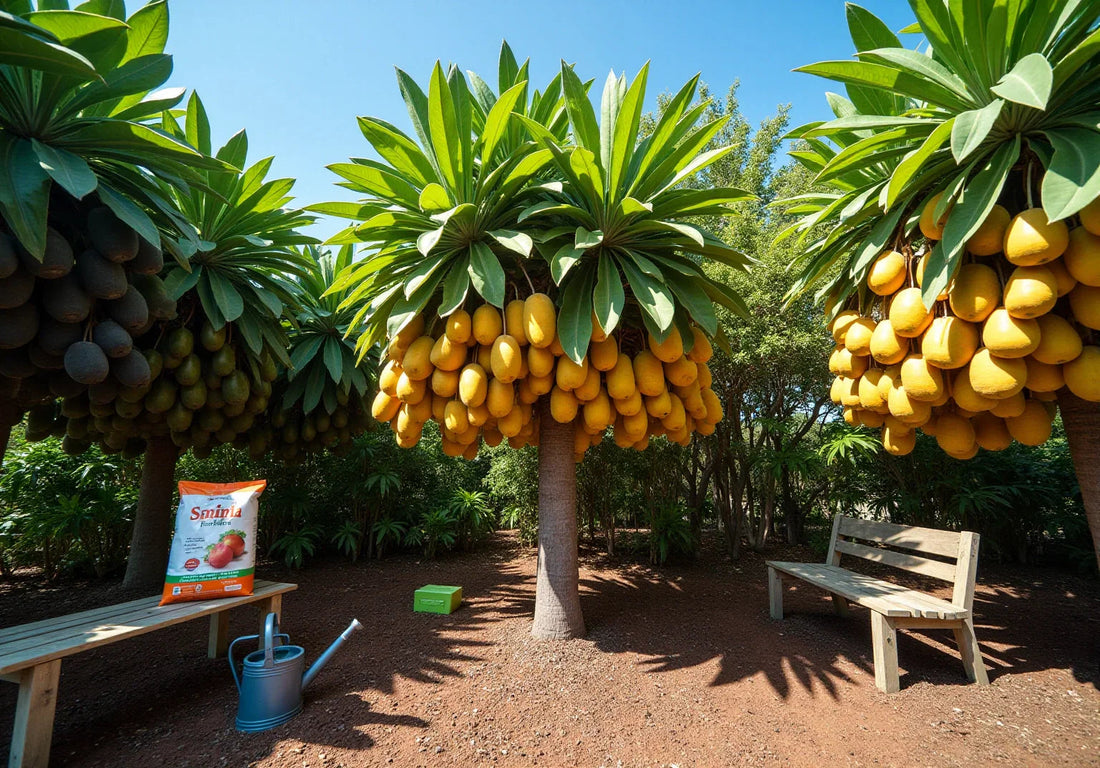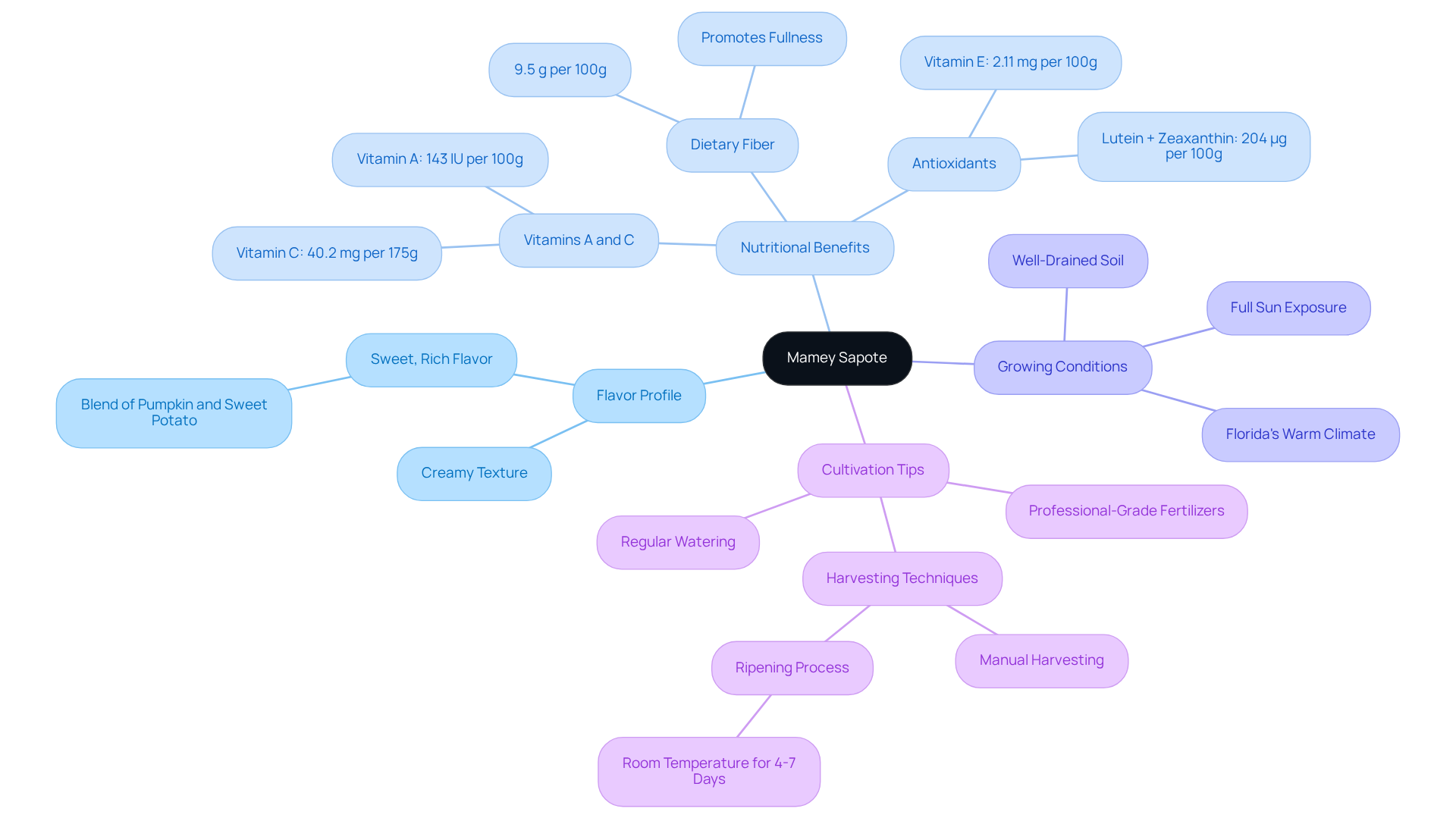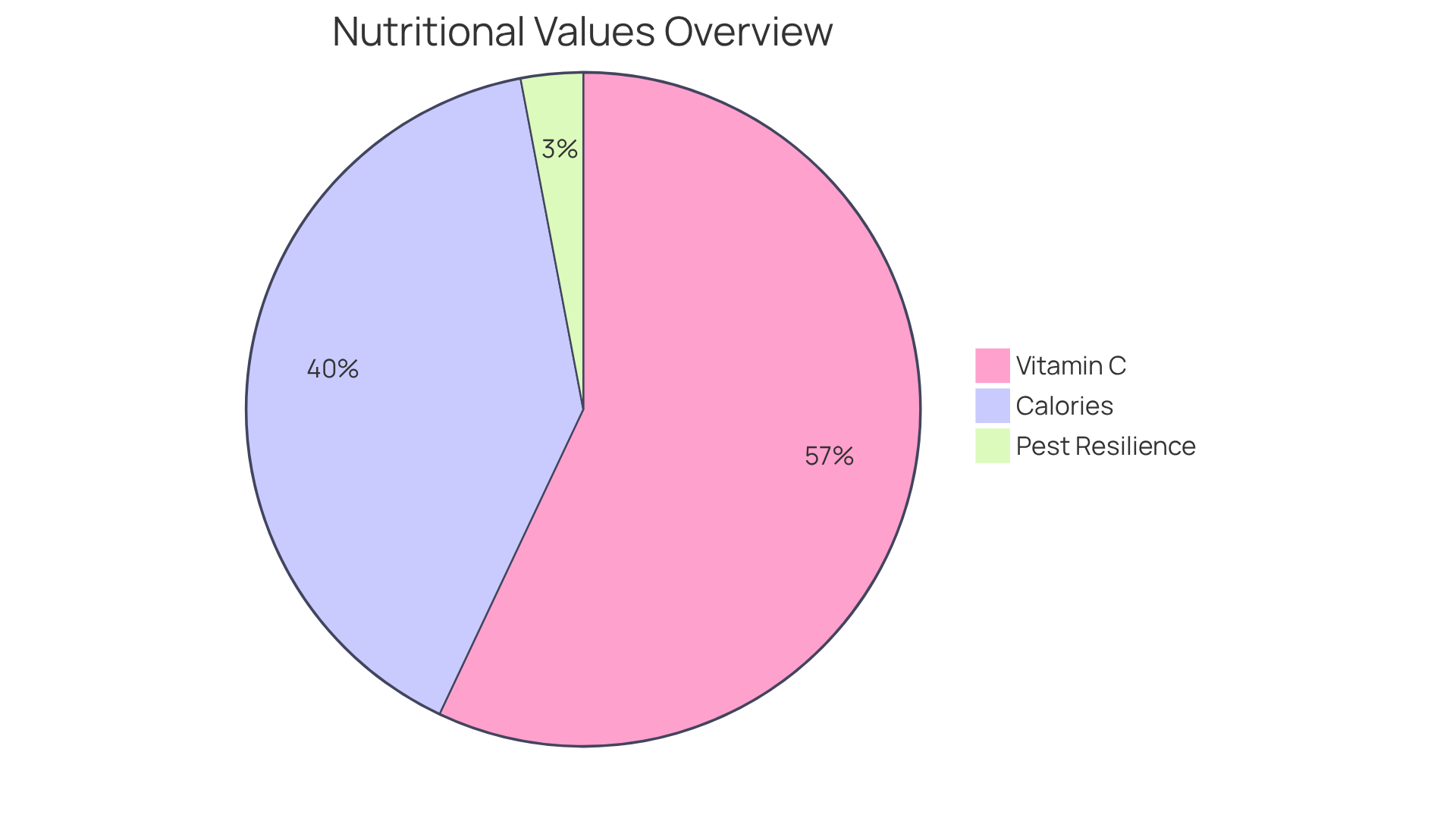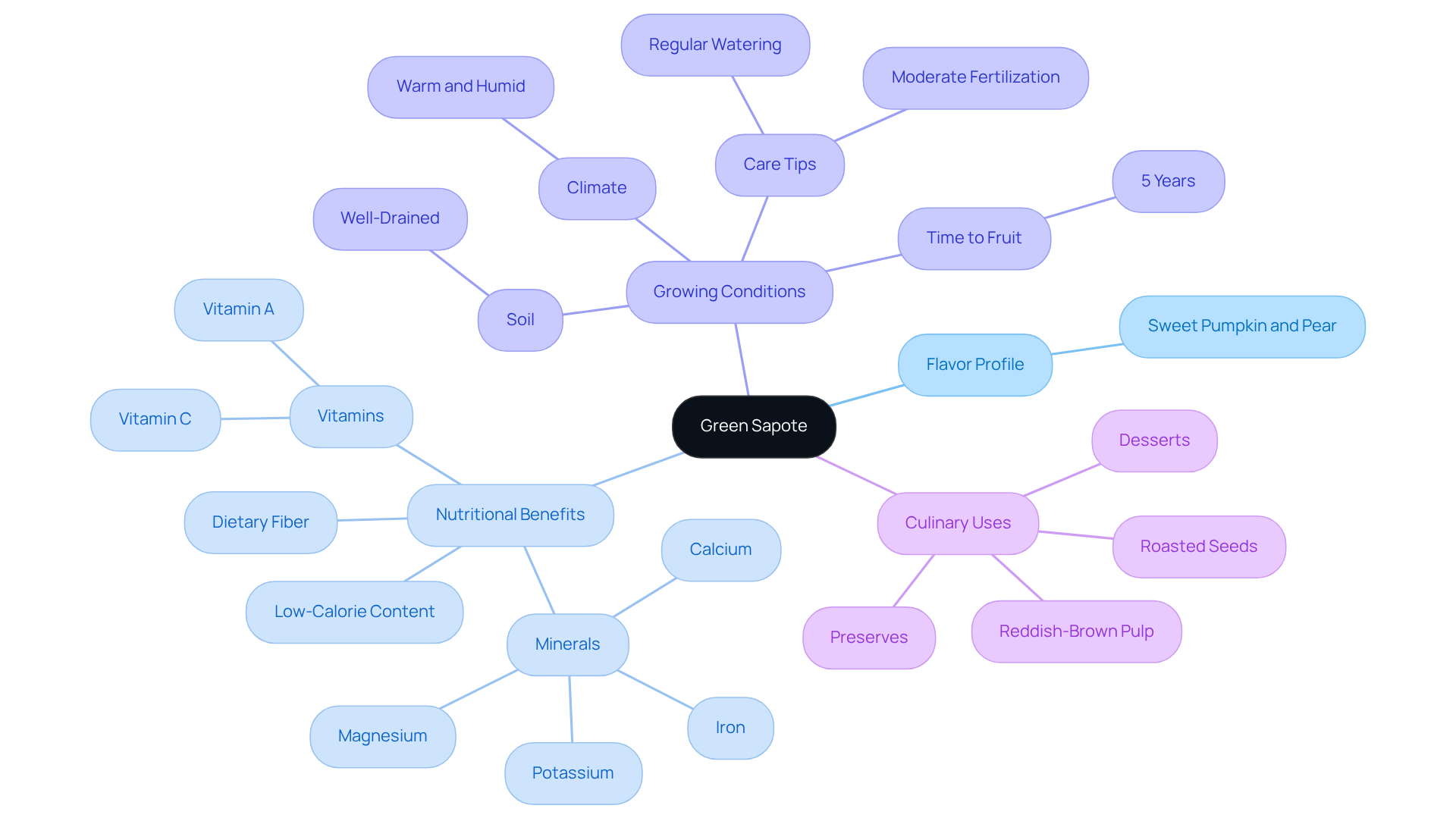
4 Types of Sapote to Enrich Your Tropical Garden
Share
The article delves into seven types of sapote that can significantly enhance tropical gardens, highlighting their unique flavors, nutritional benefits, and cultivation requirements. Each sapote variety—mamey, black, white, green, and yellow—boasts distinct attributes tailored to various gardening preferences. The article underscores the importance of proper care to maximize yields and ensure successful growth in suitable climates, offering practical takeaways for gardeners. By understanding the features and advantages of each sapote type, readers can make informed decisions to enrich their gardening experience.
Exploring the world of sapote unveils a vibrant array of flavors and textures, capable of transforming any tropical garden into a lush paradise. Each type of sapote—from the creamy mamey to the unique green variety—offers distinct nutritional benefits and culinary potential, making them essential for any gardening enthusiast.
With a variety of options available, it becomes crucial to determine which sapote will thrive best in specific environments and yield the most rewarding harvest. This exploration not only highlights the features of these tropical fruit trees but also emphasizes their advantages and benefits, guiding gardeners toward informed decisions.
Everglades Farm: Your Source for Quality Sapote Trees
Everglades Farm is committed to supplying premium saplings that flourish in Florida's warm climate. The company emphasizes sustainability, ensuring that each plant is meticulously packaged to arrive in optimal condition, which reflects their dedication to customer satisfaction. Their diverse selection features various types of sapote among other tropical fruits, allowing gardeners to easily discover the ideal addition to their tropical gardens.
Additionally, customers can boost their gardening success with professional-grade fertilizers specifically formulated for fruit trees, which promote robust growth and increased yield. This commitment to quality and care has led to an impressive 79% of customer reviews rating their service as five stars, highlighting the effectiveness of their and their dedication to excellence in online plant sales.
Mamey Sapote: A Nutrient-Rich Delight for Your Garden
Mamey (Pouteria sapota) is celebrated for its creamy texture and sweet, rich flavor, which evokes a delightful blend of pumpkin and sweet potato. This exotic fruit is not just a culinary treat; it is also a powerhouse of nutrients, providing essential vitamins A and C, dietary fiber, and a wealth of antioxidants.
For optimal growth, mamey trees thrive in well-drained soil and require full sun exposure, making them particularly well-suited for Florida's warm climate. Regular watering, combined with the application of professional-grade fertilizers, promotes healthy growth and ensures a bountiful harvest.
With the right care, can be a rewarding endeavor, enriching your garden with both flavor and nutrition.

Black Sapote: The Chocolate Pudding Fruit for Tropical Gardens
Black sapote (Diospyros digyna), often celebrated as the 'chocolate pudding delicacy,' is one of the notable types of sapote that makes a delightful addition to any tropical garden. Its creamy, sweet flesh, reminiscent of chocolate, makes it a popular choice for desserts and smoothies. This tree flourishes in warm climates, thriving in well-drained soil with ample sunlight. To ensure robust growth and plentiful yield, regular watering and moderate fertilization are essential.
Notably, black sapote is low in calories, containing only 134 calories per 100g, and is exceptionally rich in vitamin C, providing about 191 mg per 100g—three times the amount found in an orange. This makes it an excellent option for health-conscious gardeners aiming to enhance their diets with nutritious produce. Additionally, the fruit's versatility allows it to be incorporated into various recipes, including as a substitute for bananas in baked goods, making it a valuable asset in any home garden.
The black fruit tree suffers from few insect pests, which reduces the need for insecticides and pesticides, thus benefiting organic gardening practices. Ripe black fruits should be consumed quickly but can be stored in the refrigerator for a few days. Typically, black fruits are through early spring, allowing gardeners to effectively plan their planting and harvesting.

White Sapote: Creamy and Sweet for a Tropical Twist
White fruit (Casimiroa edulis) is celebrated for its , often compared to a mix of banana and vanilla. This exotic produce is not only tasty but also a nutritional powerhouse, abundant in vitamins and minerals such as vitamin C, potassium, and dietary fiber. To grow white fruit-bearing plants successfully, they flourish best in well-drained soil with full sunlight, which is essential for optimal fruiting. Regular watering and the application of professional-grade fertilizers significantly enhance growth and yield, ensuring a bountiful harvest for home gardeners.
Customers have commended Everglades Farm for providing fruit trees in perfect condition. One customer mentioned, "I received my guava tree in excellent condition. It has since dropped a few leaves, but that’s to be expected after shipping stress." Furthermore, the various types of sapote, particularly white sapote, can be enjoyed in culinary applications, from fresh consumption to incorporation in smoothies, desserts, and even salsas. Notably, it can serve as a substitute for cream or custard in desserts, making it a versatile ingredient in regional cuisine.
Everglades Farm provides a range of exotic trees, ensuring that home gardeners receive healthy plants that aid in their gardening success.
Green Sapote: A Unique Flavor for Adventurous Gardeners
Green fruit (Pouteria viridis) is a tropical delight that captivates with its unique flavor, often likened to a blend of sweet pumpkin and pear. This nutrient-rich fruit serves as an excellent source of vitamins A and C, along with essential minerals such as calcium, iron, potassium, and magnesium. Furthermore, green fruit is , making it a valuable addition to any health-conscious diet.
Green fruit trees flourish in warm, humid climates and thrive in well-drained soil. To ensure strong growth and plentiful produce, regular watering and moderate fertilization are essential. With the capacity to blossom and produce within five years, the green custard apple is an exciting choice for adventurous gardeners eager to diversify their produce selection and enjoy the rich flavors of the tropics.
Everglades Farm provides premium green trees, ensuring that you can grow this distinctive produce in your own garden. Consider incorporating the reddish-brown pulp into desserts or preserves to fully appreciate its culinary versatility.

Understanding Sapote Varieties: Key to a Thriving Tropical Garden
Comprehending the different types of tropical fruit is essential for cultivating a thriving garden. Each of the types of sapote, including mamey, black, white, green, and yellow, presents distinct flavors, textures, and nutritional benefits.
- Mamey, recognized for its creamy consistency and sweet taste akin to pumpkin and sweet potato, flourishes in warm climates and can produce 200-500 yields each year at maturity. However, cultivating mamey can present challenges, such as sensitivity to cold temperatures, which requires protective measures in cooler regions.
- Black sapote, frequently called the chocolate pudding delicacy, is abundant in antioxidants, dietary fiber, and vitamins A and C, making it a heart-healthy option.
- White custard fruit offers a creamy texture that is sweet and adaptable in cooking.
Selecting the is crucial for maximizing harvests. These plants prefer well-draining soil with a pH between 6.0-7.0 and require at least 6-8 hours of direct sunlight each day. Proper care, including regular watering—especially during dry spells—and fertilization with an 8-3-9 formula twice a year, will ensure these tropical plants thrive. Additionally, understanding the effect of climate on the growth of this fruit is vital; most varieties struggle when temperatures drop below freezing, necessitating protective measures in cooler areas. It is also advisable to consider grafted trees for faster fruit production, as they yield fruit sooner than seed-propagated trees.
By applying these best practices and selecting the appropriate varieties, gardeners can relish a varied and bountiful harvest, enhancing their tropical gardens for years ahead. However, individuals should be aware of potential allergic reactions to black sapote and consult with healthcare providers if necessary. Proper irrigation practices are essential for maintaining tree health, preventing issues like root rot, and ensuring fruitful harvests.
The central node represents the overall topic of sapote varieties, with branches for each type highlighting their unique characteristics and care needs. This layout helps you easily see how each variety differs and what to consider for successful gardening.
Conclusion
Exploring the diverse world of sapote varieties reveals a treasure trove of flavors and nutritional benefits that can transform any tropical garden. Each type of sapote, from the creamy mamey to the chocolatey black sapote, offers unique characteristics that cater to the preferences of different gardeners and culinary enthusiasts alike. By understanding these varieties, gardeners can make informed choices that enhance their gardening experience and yield delicious, nutritious fruits.
This article highlights key sapote types, emphasizing their individual growing requirements and health benefits. Mamey sapote stands out for its rich flavor and nutrient density, while black sapote impresses with its low calorie count and high vitamin C content. White, green, and yellow sapotes each offer their own delightful tastes and versatile uses in the kitchen, making them excellent options for home gardeners looking to diversify their produce. Moreover, the importance of selecting the right variety based on local conditions and employing proper care techniques cannot be overstated for ensuring a fruitful harvest.
Incorporating sapote trees into a tropical garden not only enriches the landscape but also contributes to a sustainable and health-conscious lifestyle. As interest in home gardening continues to grow, embracing the cultivation of these exotic fruits can lead to rewarding experiences and delicious bounty. Consider exploring the offerings from reputable sources like Everglades Farm to find high-quality sapote trees that will thrive in your garden, and embark on a journey to enjoy the unique flavors and health benefits these fruits have to offer.
Transform Your Garden with Delicious Sapote Trees!
Start your journey to tropical gardening today and enjoy the unique flavors and health benefits of sapote.
Frequently Asked Questions
What is Everglades Farm known for?
Everglades Farm is known for supplying premium saplings, particularly sapote trees, that thrive in Florida's warm climate, with a commitment to sustainability and customer satisfaction.
What types of products does Everglades Farm offer?
Everglades Farm offers a diverse selection of sapote trees and other tropical fruits, along with professional-grade fertilizers specifically formulated for fruit trees.
How does Everglades Farm ensure the quality of their plants?
The company meticulously packages each plant to arrive in optimal condition, reflecting their dedication to quality and customer satisfaction.
What is the customer satisfaction rating for Everglades Farm?
An impressive 79% of customer reviews rate their service as five stars, highlighting the effectiveness of their sustainable practices and dedication to excellence.
What is Mamey sapote and what are its characteristics?
Mamey sapote (Pouteria sapota) is an exotic fruit known for its creamy texture and sweet, rich flavor, reminiscent of a blend of pumpkin and sweet potato. It is also nutrient-rich, providing vitamins A and C, dietary fiber, and antioxidants.
What are the growing conditions required for mamey trees?
Mamey trees thrive in well-drained soil and require full sun exposure, making them suitable for Florida's warm climate.
How can one promote healthy growth of mamey trees?
Regular watering and the application of professional-grade fertilizers are essential for promoting healthy growth and ensuring a bountiful harvest of mamey fruit.

